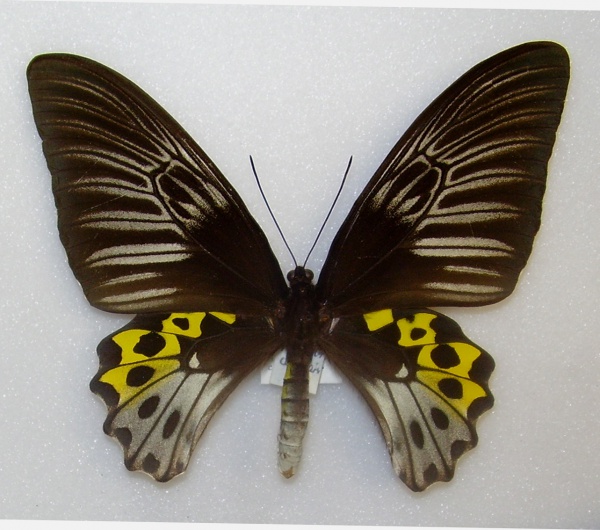Facts About Troides hypolitus
Troides hypolitus, fondly known as Rippon's birdwing, is a striking butterfly endemic to the Moluccas and Sulawesi regions. Although not currently threatened, this exquisite butterfly species is protected to ensure its continued survival. First described by Pieter Cramer in 1775, it belongs to the Papilionidae family.
Among the captivating features of Troides hypolitus are its predominantly black wings adorned with golden spots on the hindwings. Females of this species are notably larger and exhibit a darker brown hue compared to the males.
With a wingspan ranging from 180 to 200 mm, male Rippon's birdwings have black forewings with veins bordered in white and grey hindwings decorated with a chain of golden spots. In contrast, the females possess dark brown wings featuring larger golden spots with black centers. The abdomens of these butterflies are black and yellow, resembling the appearance of a wasp, with a white and yellowish underside. Sexual dimorphism is evident, with females typically being larger than males.
Rippon's birdwings inhabit the Australasian and Indomalayan realms, specifically within the Moluccas Islands and Sulawesi. There are four recognized subspecies of Troides hypolitus:
1. Troides hypolitus hypolitus - Native to the Moluccas.
2. Troides hypolitus antiope - Found in Morotai.
3. Troides hypolitus cellularis - Inhabits Sulawesi and Talaud.
4. Troides hypolitus sulaensis - Resides in the Sula Islands.
The butterflies' stunning appearance and unique characteristics make them a fascinating subject for researchers and butterfly enthusiasts alike.

 Timor Leste
Timor Leste